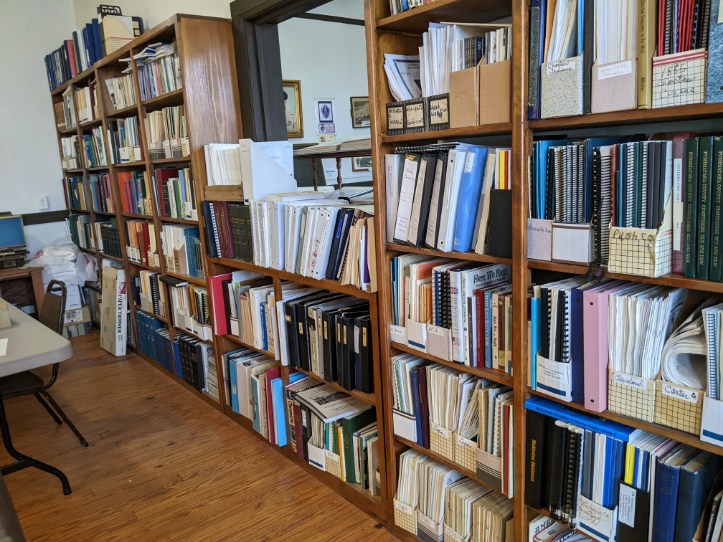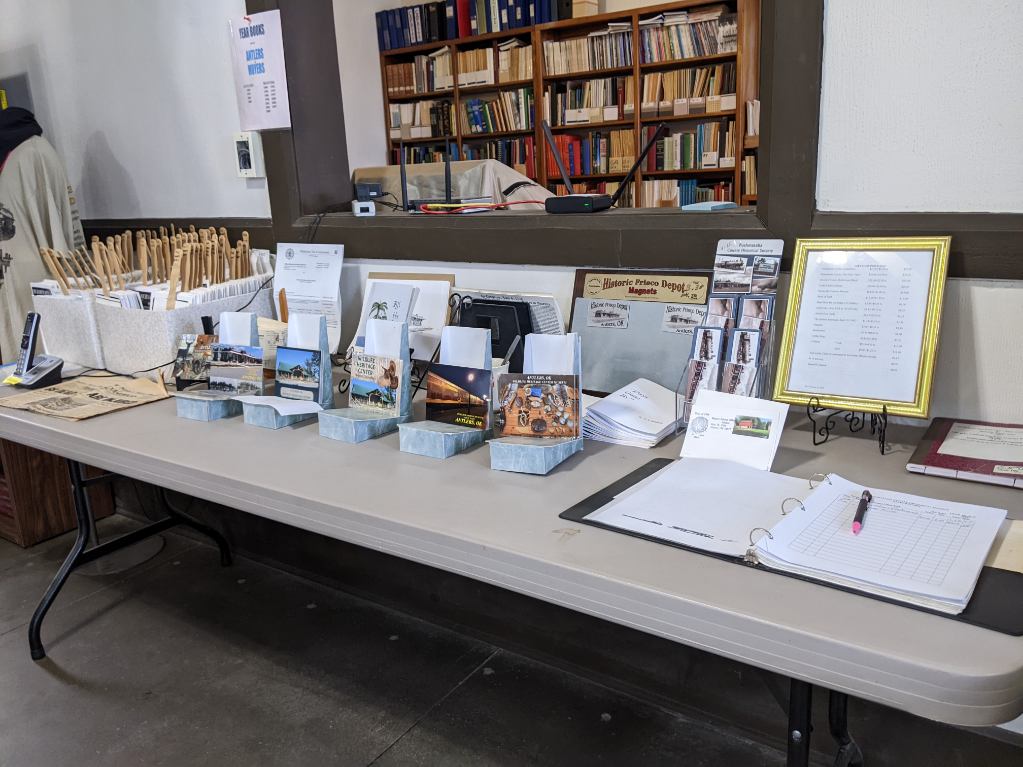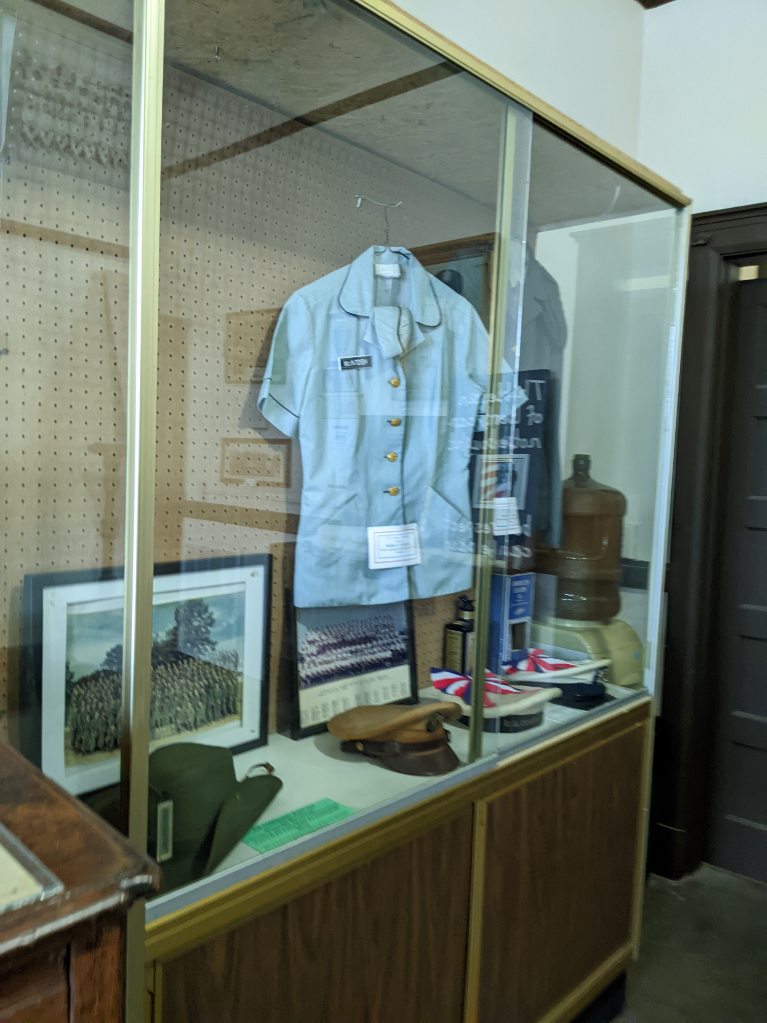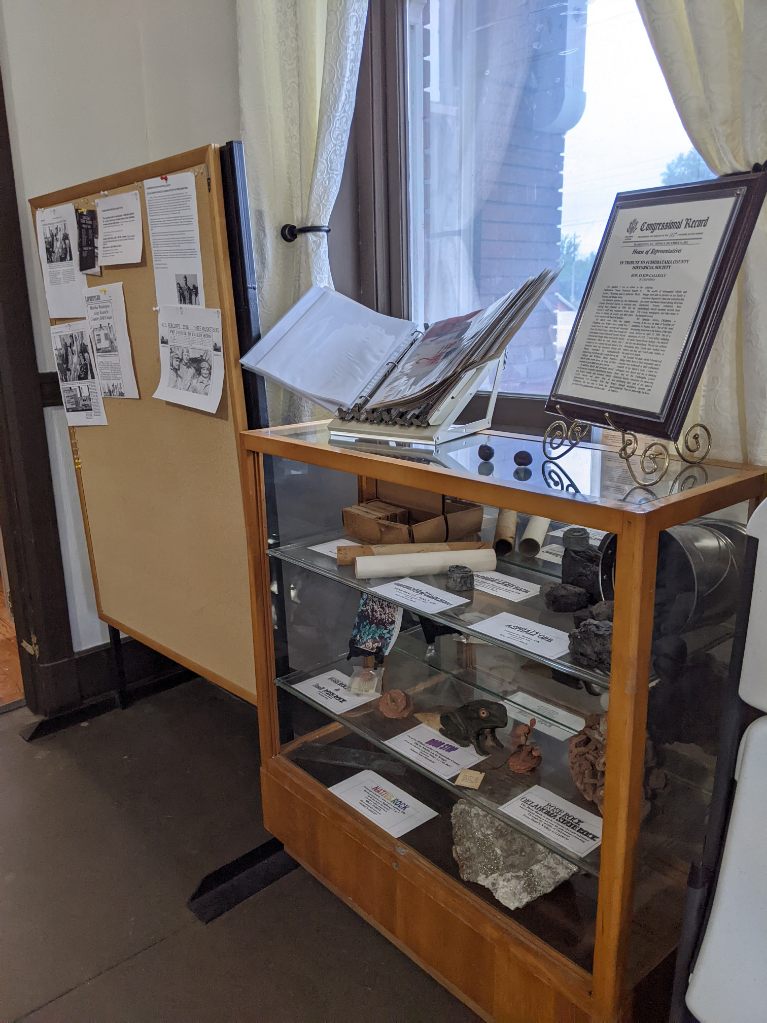119 W. Main St, Antlers OK 74523
Although Pushmataha County was created on November 16, 1907 – the day of Oklahoma’s statehood – no historical society was established for almost 80 years. On January 20, 1984 a group interested in preserving the history of the county met at the Diamond Steak House in Antlers to found a historical society. At this meeting the following offices were established and the following officers elected: Carl Wood, president; Dorothy Arnote West, vice president; Jimi Moyer Cocke, treasurer; and Anne Halley Smallwood, secretary. John Cocke and Mary Olive Wood were elected as directors.
The organization’s first meeting was held on April 10, 1984 at which a constitution and by-laws were adopted. Incorporation as a not-for-profit entity had already been established.
A general membership drive began at once, and proved successful.
The first major goal of the historical society was to obtain, and preserve, the historic Antlers Frisco Depot and Antlers Spring. Built by the St. Louis and San Francisco Railroad, also called the Frisco, in 1913, it had fallen into disrepair and general disuse. The Frisco had ended passenger operations in 1958 and in 1981 it ended all remaining freight operations. At that time the railroad track and trestle bridges north of Antlers were removed. Track south of Antlers continued in operation for purposes of hauling pulpwood, which was loaded onto rail cars at the Antlers Depot until 1999, when a loading facility was built just south of town.
Burlington Northern Railroad—the successor to the Frisco Railroad—gave the depot to the new Pushmataha County Historical Society in June 1985. Efforts began immediately to stabilize the building and restore it. A new roof, some new window glass, electrical wiring and a furnace and air conditioning system were installed. Much of the labor was donated by area residents.
A second major initiative was identifying and inventorying all cemeteries in Pushmataha County. Many cemeteries both large and small were found, and each grave was carefully listed. As a companion effort the burial records of the local funeral home, Mills-Coffey Funeral Home, were used to accomplish as complete an inventory for each burial site as possible. This effort culminated in the publication of a book in 1988, Pushmataha County Cemeteries—Old and New.
As part of the cemetery identification project almost 12,000 burials and grave sites were inventoried at approximately 119 locations. Several volunteers completed this mammoth project, including co-chairmen Jerry Miller and Everett Helm, assisted by Allan Birdsell, Kay Black, Kenneth and Myrtle Edmond, Christine Ives, Marjorie Rember, and others.
Since acquiring the Antlers Frisco Depot and Antlers Spring the Pushmataha County Historical Society has placed historical exhibits on public display as well as established a research library. Volunteers staff the facility throughout the week. The Depot itself is an artifact from an earlier time—the interior is divided into separate waiting rooms for white people and black people, with separate sets of toilets—allowing the society to educate visitors about the effect that lack of equal rights and racial equality had on both architecture and social customs.[3]
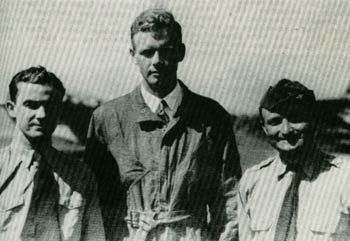
Did you know?
I have been going through old Antlers newspapers at the Depot for a long time and found interesting articles. But when I found this story about Lt. Cornelius and the 3 Musketeers I really got interested. I began researching to find more information and checked the U.S. Air Force Thunderbirds and Army Air Corps web sites and found nothing listing the 3 Musketeers. I then checked the Air Force Archives but that is not online.
The early years of aviation in Oklahoma were eventful with several things happening that were newsworthy. Colonel Lindbergh’s flight across the Atlantic was newsworthy. Lindbergh started as a Barnstormer daredevil in early aviation. Another important news that apparently was forgotten is a fellow from Antlers high school attended The University of Oklahoma and Virginia Military school, entered the air cadet program, became a Lieutenant in the U.S. Air Corps and was a member of the Three Musketeers. This was early in aviation history when men like Billy Mitchell, Chennault, Wiley Post and many more made history in aviation. The 3 Musketeers of early aviation have been forgotten.
I found Lt. Lewers Cornelius’ name going though old newpapers and learned he was among one of the first three men picked in 1927 for the 3 Musketeers, a precision flying unit. They precluded the Air Force Thunderbirds. They were part of the 1st pursuit squadron started in Selfridge Field, Michigan.
The following article was in “Pushmataha County the Early Years” written by Dorothy Arnote West. The book can be purchased at the train Depot, Pushmataha County Historical Society.
Lieutenant William Lewers Cornelius
By Annie Tasffe Arnote
“Whom the gods love, die young”
Few people crowd the short span of 25 years with more achievements than did William Lewers Cornelius. He was born in Fort Smith, Arkansas, July 1, 1903, son of John M. and Minnie Lewers Cornelius who moved to Antlers, I.T. in 1905. He graduated from Antlers High School with the class of 1919 and the next September entered Virginia Military Institute where during his two years’ attendance distinguished himself in scholarship and athletics. In 1921 he enrolled in the University of Oklahoma, speedily attaining prominence as a student and as a member of the varsity baseball team. He was vice-president of the Student Council 1923-24, a member of Toga, the American Socitey of Engineers, Checkmate, Clip, and president of Sigma Alpha Epsilon. He graduated with both BA and BS degrees.
In the spring of 1925, Lewers entered the Cadet Flying School at Brooksfield, Texas. On June 30,1925, he received his second Lieutenant commission and was transferred to Kelly Field, Texas, and from there to Selfridge Field, Michigan. While at the latter post, he was detailed for special flying in Wings, a movie production in which he doubled for Buddy Rodgers. It was at Selfridge that The Three Musketeers was formed. The original members being Lt. J.J. Williams of Moab, Utah; Lt. Thad Johnson of Celeste, Texas, and Lewers. They became window dressing for the Air Force, performing precision flying, stunts, and race competition at air shows throughout the nation and serving as escorts for celebrities. The Three Musketeers were assigned to accompany Col. Charles Lindbergh on a tour of the United States and Canada after Lindbergh’s famous solo flight to France. It was on the flight to Canada that the ranks of the 3-Ms was first broken with the death of Lt. Johnson.
Lewers was detailed for the air race at the Sesquicentennial Exposition at Philadelphia where he came in third and in September, 1927, to the National Air Derby at Spokane, Washington, where he placed first. In July, 1928, he was transferred to the 95th Pursuit Squadron at Rockwell AFB, California. Tragedy was stalking the path of the Three Musketeers for it was at Mines Field, California, on September 11,1928, that Lt. Williams lost his life when his plane crashed in front of the grandstand. Colonel Lindbergh immediately took Williams’ place and the race went on. Two weeks later, while army planes were executing the Loughberry Circle, one of the planes collided with the one piloted by Lt. Cornelius, and he was killed in the crash. Lt. Woodring, who had taken the place of Lt. Johnson and who was the sole survivor of the Three Musketeers, accompanied the body home. Funeral services were held in the Antlers High School Auditorium and burial was in the National Cemetery at Fort Smith, Arkansas.
Life for Lewers had been full. Friends and well wishers were always near to encourage, and to his daring were added gayety, a happy comradery, and lovableness. His was a brave and valient spirit.










